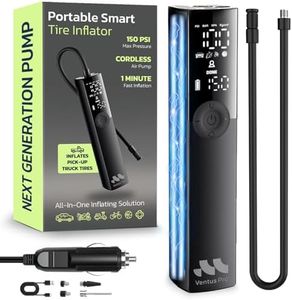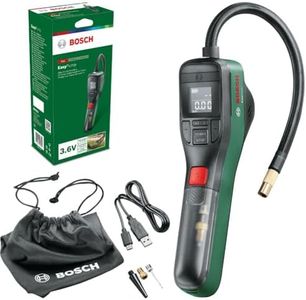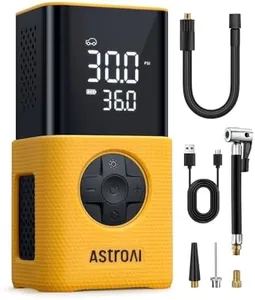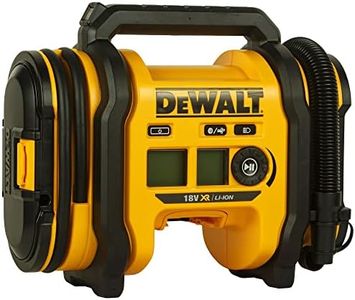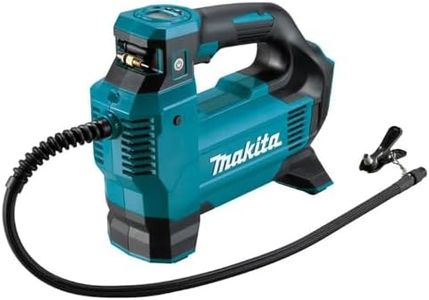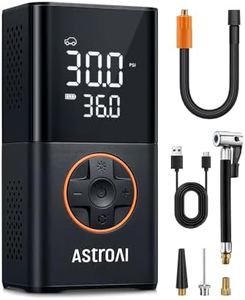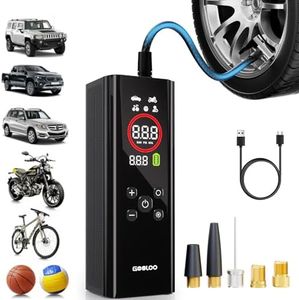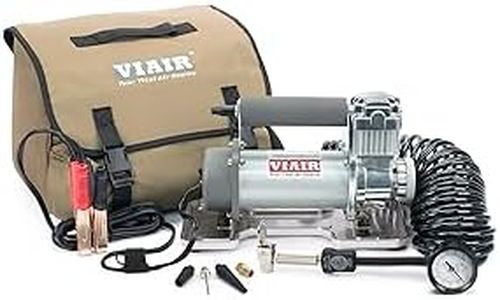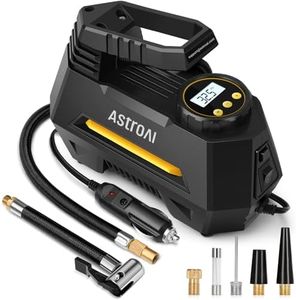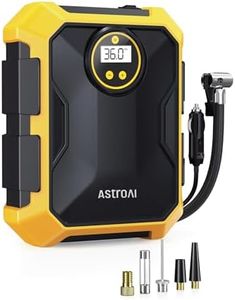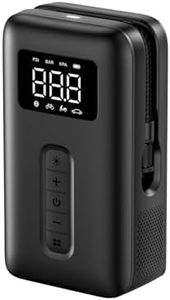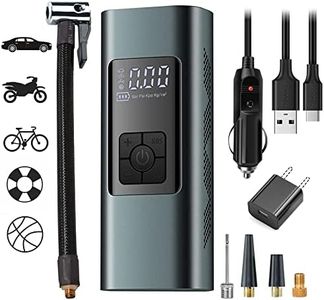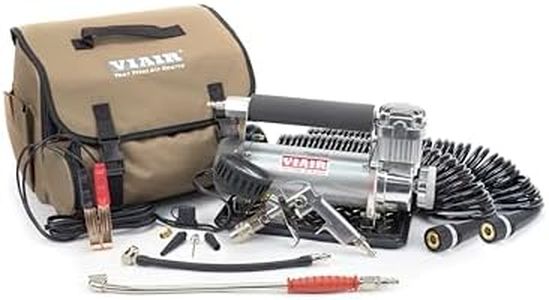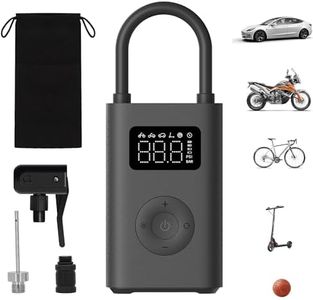We Use CookiesWe use cookies to enhance the security, performance,
functionality and for analytical and promotional activities. By continuing to browse this site you
are agreeing to our privacy policy
10 Best Tire Inflators
From leading brands and best sellers available on the web.Buying Guide for the Best Tire Inflators
Choosing the right tire inflator is important for both safety and convenience. Whether you need to top up your car, bike, or sports equipment, a tire inflator can save you time and prevent getting stranded with a flat. To pick the best one for you, consider where and how often you'll use it, what kind of items you'll inflate, and how quickly you need the work done. Focusing on the specs below will help you find a tire inflator that matches your needs and use habits.Power SourceThis spec refers to how a tire inflator gets its energy: it might plug into your car's 12V socket (also called the cigarette lighter), into a standard home plug (AC), use a built-in rechargeable battery, or even be hand- or foot-powered. The power source matters because it decides where and how you can use the inflator, as well as its portability. If you mainly use your inflator on the road, a 12V car socket model or battery-powered inflator is convenient. At home, AC-powered versions make more sense. Hand- or foot-pump inflators don't rely on electricity but require manual effort. Choose based on where you expect to use the inflator most.
Maximum Pressure (PSI)Maximum pressure, measured in PSI (pounds per square inch), tells you the strongest air pressure the inflator can produce. This matters because different tires and inflatable items need different levels of pressure. For cars or trucks, higher PSI capability (at least 100 PSI) ensures it can handle big tires. For bikes, balls, or smaller inflatables, lower PSI may be fine. Know your tire’s required pressure, then pick an inflator that can deliver a bit above that number.
Inflation Speed (CFM or L/min)Inflation speed is measured in CFM (cubic feet per minute) or L/min (liters per minute), and it describes how much air the inflator can push into a tire in a given time. This spec is important because a higher speed means less waiting. Slow inflators can take several minutes for a car tire, while faster ones do the job in a minute or less. If you'll use the inflator for large tires or want to save time, look for higher CFM or L/min ratings. For occasional or emergency use, a slower model may be fine.
Size and PortabilityThis describes the physical size and weight of the inflator, as well as whether it’s easy to store or carry. Compact, lightweight inflators are better for keeping in the car or carrying on your bike, while larger ones may be more stable or powerful but less portable. Consider where you’ll store the inflator and how you’ll carry it. If space is tight or you travel often, pick a smaller, portable model. For home use, size may be less of a concern.
Automatic Shut-offThis feature means the inflator stops pumping air automatically when a preset pressure is reached. It's important because it prevents over-inflating tires, which can be unsafe, and saves you from having to watch the gauge constantly. If you want a more hands-off and safe experience, look for a model that allows you to set the pressure and turn itself off at the right moment.
Display and ControlsThe display might show the current pressure and let you set a target. Clear digital displays make it easier to read numbers, especially in low light. Controls affect how simple it is to operate the inflator. If you want something easy to use, look for an inflator with a large, readable display and straightforward buttons. If you’re comfortable with more manual adjustment, a simple analog gauge or dial might do.
Included AccessoriesAccessories can include extra nozzles, adapters, carrying cases, or built-in lights. These increase the inflator's versatility, fitting everything from bike tires to sports balls to air mattresses. If you want an inflator to handle more than just car tires, check that the model comes with the right adapters and extra items that suit your needs.
